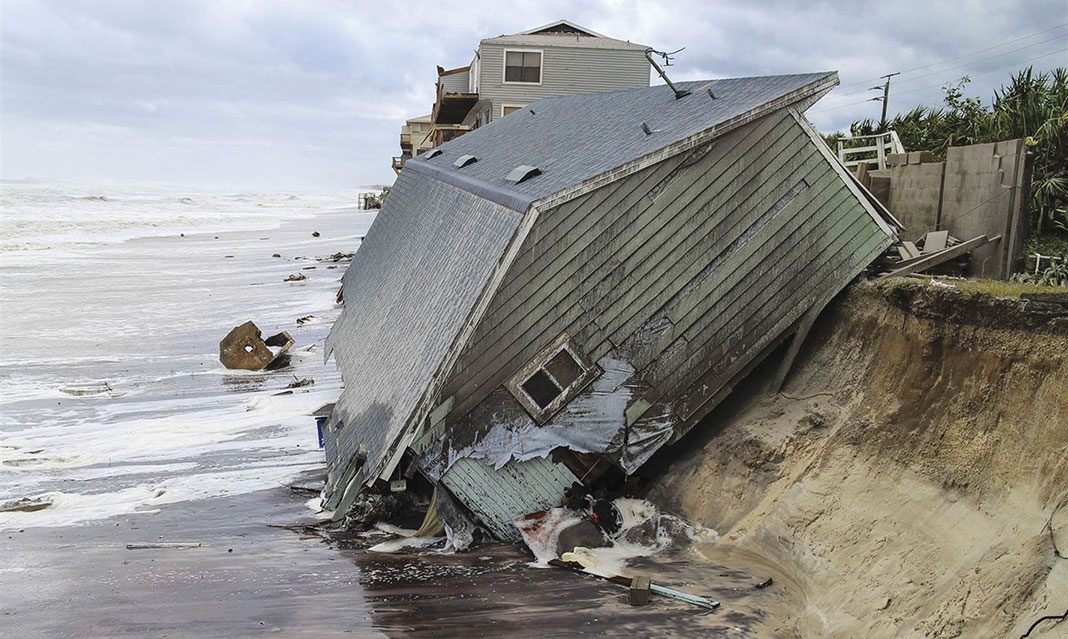The onset of September brought a cascade of storm activity as Hurricane Harvey, a category five hurricane, flooded Houston, while Irma tore through the Caribbean, the Bahamas, Cuba and southeast United States. With death tolls crowding around 100 people altogether, the affected regions are left to recuperate after sustaining widespread damage and displacement.
Whereas environment conservation groups have become increasingly vocal in voicing their concerns about climate change, analysts remain cautious. While a recent headline from The Guardian reads, “Floridians battered by Irma maintain climate change is no big deal,’” InsideClimate News, a not-for-profit news organization, published a report titled “Damage from Hurricane Irma, Harvey add to growing U.S. costs of climate change.”
Professor Ingo Ensminger, an associate professor in the Department of Biology at UTM, studies plant physiology and climate change. Ensminger, whose research focuses on identifying the mechanisms that enable plants and trees to survive changing climates, explains how it is more than just about one event occurring on its own which is a cause for concern.
“It is important to monitor, record and assess how often these extreme weathr events such as flooding, drought and heatwaves occur,” says Ensminger, “this means instead of experiencing such extreme events maybe once every 50 years, it is now more likely to see an extreme event every 40 or every 30 years in a certain region.”
He does, however, believe that we shouldn’t jump to blame climate change for an event that we haven’t seen before in our lifetime—because storms, wildfires, and natural disasters have occurred at such extreme levels before.
“We will see extreme hurricanes more often when look[ing] over longer timespans. If the occurrence of these category four or five hurricanes does increase, for example, five times every 50 years as opposed to once, that would likely indicate a consequence of a changing climate – this is what the models predict and this is what the trends already seem to confirm for some of the predicted extreme events,” explains Ensminger.
Noah Diffenbaugh, a climate researcher at Stanford University, provides a comparison between Hurricane Katrina and Hurricane Harvey to the Chicago Tribune in their article titled “Will future storms be worse than Harvey? The debate over climate and hurricanes” published on September 2.
Diffenbaugh highlightes how “the methodological frameworks were very much in their infancy at the time of Katrina in 2005.”
Diffenbaugh emphasizes how although this means we are now closer to answering how climate change intensifies hurricanes, we can not say that climate change itself is what causes them.
“Harvey was not caused by climate change, yet its impacts—the storm surge, and especially the extreme rainfall—very likely worsened due to human-caused global warming,” states Stefan Rahmstorf, head of Earth system analysis at the Potsdam Institute for Climate Impact Research.
However, The Guardian, reported on August 28, how the storm surge was half a foot higher than it would have been just decades ago, which then translated to increased flooding and destruction.
In the context of how different ecosystems are influenced by the changing climate, Ensminger describes: “Most plants are well adapted to withstand droughts and heatwaves if they occur rarely and they have time to recover. However, an increase in the frequency of these events affects their fitness and has long-term effects on the resilience of ecosystems.”
As part of their research, Ensminger and his team aim to design experiments that can mimic future climate based projections derived from climate models. Ensminger’s group hypothesizes that extreme events may occur more frequently as a result of climate change.
Although climate observers emphasize the frequency of events, The New York Times nevertheless describes how “no other hurricane has matched the strength of Irma’s winds so far east in the Atlantic […] longer than any other Atlantic hurricane […] also [breaking] records for accumulated cyclone energy.”
Eugene Robinson, an opinion writer at the Washington Post, wrote on August 28: “Pay attention to what happened to Houston. It is rare to be given such a vivid look at our collective future.”
As Ensminger along with other cliamte researchers describe, climate change cannot be definitively blamed for Hurricane Harvey and Irma, but it may have played a contributing role in the intesity of the storms. As Robinson went on to say in the Washington Post, “Global warming did not conjure the rains that flooded the nation’s fourth-largest city, but it likely did make them more torrential. The spectacle of rescue boats plying the streets of a major metropolis is something we surely will see again. The question is how often.”



